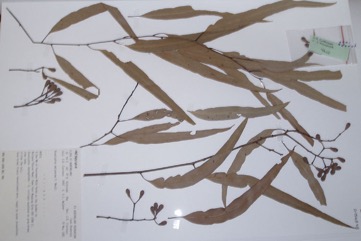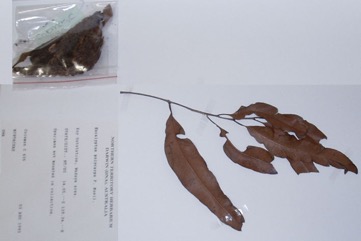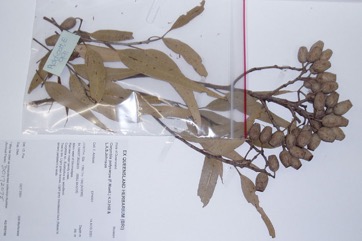Long fruited Bloodwood, Red Bloodwood

It is a tropical plant. It does best on light to medium soils. It needs well drained conditions and an open sunny position. It is damaged by drought and frost.
Also known as:
Gadga, Wurringilaka
Synonyms
- Eucalyptus polycarpa F. Muell.
Edible Portion
- Seeds, Galls
Where does Long fruited Bloodwood grow?
Found in: Australia, Pacific, Papua New Guinea, PNG
Notes: The gum is used for medicine. There are a 110 Corymbia species mostly originally in Australia.
Growing Long fruited Bloodwood, Red Bloodwood
Cultivation: Plants are grown from seed. Seed should be collected from local sources as these will be better adpated to local conditions.
Edible Uses: The seeds are eaten. The insect pupa inside the galls in Northern Australia is eaten. The bloodwood apples are a nut like growth with sweet fluid in the centre is eaten. Insects on the leaves produce a sweet manna like substance which is eaten.
Production: Trees flower in March to June and fruit from June to September.
Nutrition Info
per 100g edible portion| Edible Part | Energy (kcal) | Protein (g) | Iron (mg) | Vitamin A (ug) | Vitamin c (mg) | Zinc (mg) | % Water |
|---|---|---|---|---|---|---|---|
| - | - | - | - | - | - |
Long fruited Bloodwood, Red Bloodwood Photos



References
Bodkin, F., 1991, Encyclopedia Botanica. Cornstalk publishing, p 443
Brock, J., 1993, Native Plants of Northern Australia, Reed. p 176 (Photos)
Cherikoff V. & Isaacs, J., The Bush Food Handbook. How to gather, grow, process and cook Australian Wild Foods. Ti Tree Press, Australia p 200
Elliot, W.R., & Jones, D.L., 1992, Encyclopedia of Australian Plants suitable for cultivation. Vol 4. Lothian. p 182 (Photos)
Hall, N. et al, 1972, The Use of Trees and Shrubs in the Dry Country of Australia, AGPS, Canberra. p 376
Hearne, D.A., & Rance, S. J., 1975, Trees for Darwin and Northern Australia. AGPS, Canberra p 62
Kenneally, K.E., Edinger, D. C., and Willing T., 1996, Broome and Beyond, Plants and People of the Dampier Peninsula, Kimberley, Western Australia. Department of Conservation and Land Management. p 144 (Photos)
Lands, M., 1987, Mayi: Some Bush fruits of Dampierland. Magabala Books, Broome West Australia. p 40
Lazarides, M. & Hince, B., 1993, Handbook of Economic Plants of Australia, CSIRO. p 106
Milson. J., 2000, Trees and Shrubs of north-west Queensland. DPI p 204
Paczkowska, G . & Chapman, A.R., 2000, The Western Australian Flora. A Descriptive Catalogue. Western Australian Herbarium. p 358
Petheram, R. J. and Kok, B., 2003, Plants of the Kimberley Region of Western Australia. UWA Press p 413
Smith, M & Kalotas, A. C., 1985, Bardi Plants: An Annotated List of Plants and Their Use by the Bardi Aborigines of Dampierland, in North-western Australia. Rec. West Aust. Mus. 1985, 12(3): 317-359 (As Eucalyptus)
Telopea 6:254. 1995
Tiwi Plants and Animals. 2001, Aboriginal flora and fauna knowledge from Bathurst and Melville Islands, northern Australia. Northern Territory Botanical Bulletin; No. 24 p 50
Townsend, K., 1994, Across the Top. Gardening with Australian Plants in the tropics. Society for Growing Australian Plants, Townsville Branch Inc. p 199
Vigilante, T., et al, 2013, Island country: Aboriginal connections, values and knowledge of the Western Kimberley islands in the context of an island biological survey. Records of the Western Australian Museum Supplement 81: 145-182
Wheeler, J.R.(ed.), 1992, Flora of the Kimberley Region. CALM, Western Australian Herbarium, p 524 (Drawing)